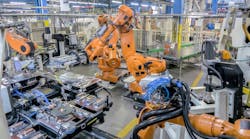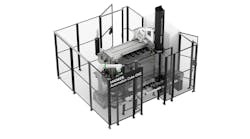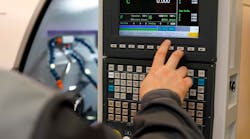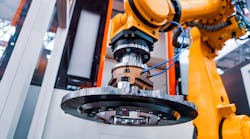Automotive component manufacturers continue to face increasingly shorter product lifecycles, more demanding product quality expectations and pressure to reduce productions costs.
Shops in the car and truck exhaust manufacturing sector, for instance, constantly search for greater precision and efficiency in their production processes, so companies, such as AddisonMckee (www.addisonmckee.com), a tubebending and end-forming technology specialist, have increased their interest in fully automated complete workcells to produce quality parts.
Those workcells can include:
- A DataBend, all-electric tube bending machine or machines.
- Tube roll-down racks for tube delivery that are equipped with seam detectors for tube orientation.
- A bend-tool change system.
- A FormMaster tube parting endforming machine.
- A Fanuc R2000iB 165-kg capacity robot.
- A pin stamp station.
- An exit conveyor.
- And, a cell master control unit.
AddisonMckee recently designed and developed a typical, high-level automated system for a global truckexhaust manufacturer.
The system bends large-diameter, thin-wall tubing and is capable of 1D bending of various grades of mild and aluminized stainless steel tubing to 6 in. in diameter with wall thicknesses as thin as 0.065 in.
AddisonMckee’s automated process starts with its special bend-tool change that uses a four-station tool change turntable. The company developed this tool changer specifically for truck exhaust makers that require frequent tool changes because of relatively short production runs.
Whenever a tool change is required, the program triggers the system’s robot to automatically perform the operation.
Embedded within each tool set is a read/write chip that enables the tool change turntable to recognize the tool that is in each location.
With the correct tools in place in the bend die, the robot moves to the automated roll-down rack. Tubes roll into place, a seam-detection device orients each weld seam into the correct position, and the robot picks up the tube from the detector and loads it into the bender.
Once loaded, the bender bends the component accurately and under complete control. Since the system uses a “stick” or “serpentine” bending process, it can bend multiple parts from one tube with minimal scrap and labor.
After tubes are bent, the robot transfers them to a pin-stamp marking system that applies identification, including part and serial numbers.
The robot then positions and holds the bent and marked components while tube trimming and parting end-forming operations are completed. All finished components are then removed, via conveyor, for other forming operations.







